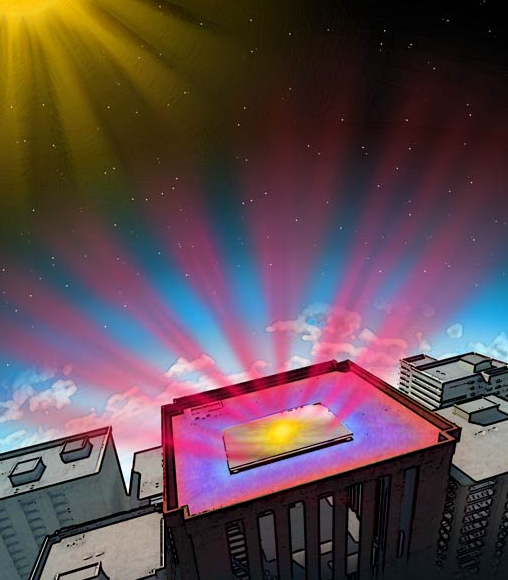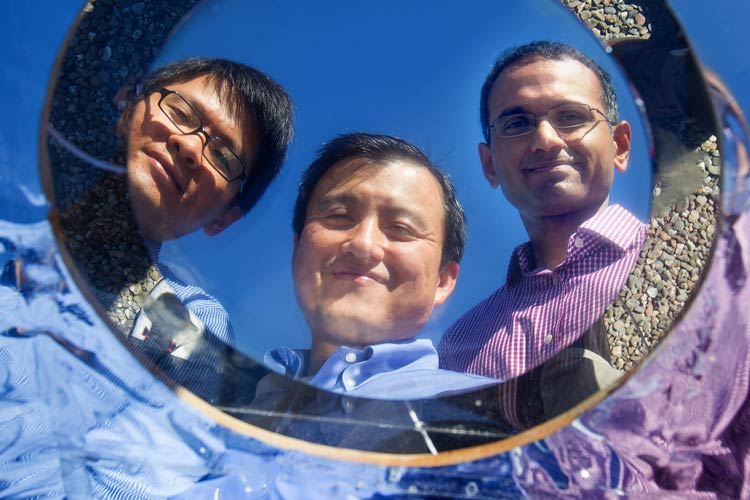In today’s awesomely brutal-sounding material science news, Stanford engineers have created a building material that exploits that “cold darkness of the universe” to cool itself — even when the sun is shining. Stanford calls it a “cosmic fridge”, and it could replace air conditioning.

In a fascinating paper published yesterday in Nature, Stanford’s Shanhui Fan and Aaswath Raman explain how the material works by utilising the familiar phenomenon calling radiative cooling. It’s a pretty simple concept: Earth’s atmosphere is transparent to specific wavelengths, around about eight microns — this is called the “thermal window”, where heat radiates directly into space at those specific far-infrared wavelengths. This probably sounds familiar; as Stanford News explains, “invisible light in the form of infrared radiation is one of the ways that all objects and living things throw off heat”, from our faces to our ovens.
By dumping excess heat through this magical window at which wavelengths go from the Earth to space directly, the Stanford device uses our entire Universe as a heat dumping ground. “Think about it like having a window into space,” Fan told Stanford News. Let’s turn to IEEE Spectrum’s excellent explanation for more:
The entire Universe, being mostly empty space, has an average temperature of just under three Kelvin, meaning that it will happily absorb just about as much heat as you can possibly throw at it, making it a heat sink that’s nearly, you know, universal.
But the Stanford team has exploited the phenomenon in a very specific way: They have made it work during the daytime. “Further, the cold darkness of the Universe can be used as a renewable thermodynamic resource, even during the hottest hours of the day,” the team writes in their abstract. How? By reflecting 97 per cent of the sun. The super-thin material is essentially a layer cake of glass and hafnium oxide that both reflects the sunlight and exploits that good old thermal window at the same time.

The technology is being described as a totally passive alternative to air conditioning — and as IEEE points out, the best part might be that it’s small potatoes to manufacture, unlike so many other groundbreaking-but-inaccessible technologies. Right now, Stanford News says the prototype is the size of a “personal pizza”. The next step? Making a prototype that’s the size of a roof (or a few thousand personal pizzas). [Nature; IEEE Spectrum; MIT News]
Picture: Dominik Michalek
